Saturday, April 25, 2020
SATURDAY NIGHT SUPERTRAMP, THE BLUE NILE.
English rock band, founded in London in 1969 by Roger Hodgson (vocals, keyboards, guitar) and Rick Davies (vocals, keyboards).
The Blue Nile with Tinseltown in the Rain. From their 1984 debut album A Walk Across the Rooftops.
Scottish band formed in the early eighties by Paul Buchanan, Robert Bell and Paul Joseph ("PJ") Moore. The three of them studied at the Glasgow Uni, where they obtained degrees in literature and medieval histor, mathematics, and electronics, respectively.
Hat tip OutlawDaughter.
Good night and stay safe.
MFBB.
CELEBRATING 30 YEARS OF HUBBLE SPACE TELESCOPE DISCOVERIES!!!
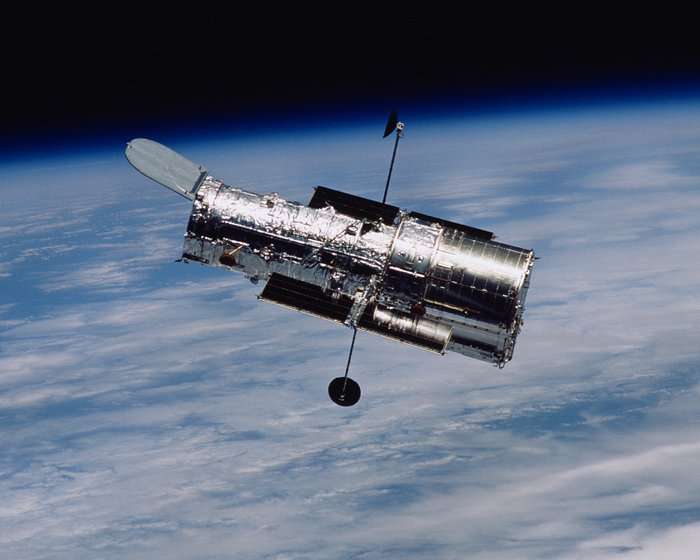
Via Space dot com:
"...In 1946, soon after World War II, astronomer Lyman Spitzer proposed launching a space telescope, which could overcome the limitations of ground-based observatories. It took a couple more decades before the idea garnered enough support for the National Academy of Science to organize a committee of scientists to evaluate the potential of a Large Space Telescope. With Spitzer at the helm, the committee published a document in 1969 that outlined the scientific uses of a Large Space Telescope and advocated for its construction, according to a history of the telescope written by Gabriel Olkoski for NASA.
The National Academy of Science took their pitch to NASA — the only agency capable of making the Large Space Telescope a reality. NASA was already considering a space telescope of some type, but they were undecided on how big to make it and where to start. In 1971, George Low, the agency's acting administrator at that time, greenlighted the Large Space Telescope Science Steering Group and NASA soon began lobbying Congress for funding for the endeavor."
"...The expensive project was a tough sell, and funding was initially denied by the House Appropriations Subcommittee in 1975. NASA then upped their lobbying efforts and got buy-in from European Space Agency, which shared the costs. Congress eventually granted funding for NASA's portion of the Large Space Telescope in 1977.
Development began almost immediately, and NASA planned to launch the telescope in 1983, but various production delays pushed the launch date back to 1986.
In the meantime, the Large Space Telescope was renamed the Hubble (HST) in honor of Edwin Hubble, an American astronomer who, among other things, determined that the universe extended beyond the borders of the Milky Way.
The HST was delayed once more after the 1986 space shuttle Challenger exploded a minute after takeoff on January 28 of that year, killing all seven astronauts on board. It took two years before shuttle flights could resume and NASA could begin planning Hubble's launch again.
The world's first space telescope finally launched aboard space shuttle Discovery on April 24, 1990. The effort cost $1.5 billion, but there would be ongoing costs — both expected and unexpected...."
"...Initial instruments on Hubble included the Wide Field Planetary Camera, the Goddard High Resolution Spectrograph (GHRS), the Faint Object Camera (FOC), the Faint Object Spectrograph (FOS) and the High Speed Photometer.
Advertisement
Hubble experienced equipment issues right off the bat. The telescope's images came back so blurry that they were close to useless. Hubble's main mirror had a defect — a spherical aberration caused by a manufacturing error. The flaw was minute, at just 1/50th the thickness of a sheet of paper, but that was big enough to cause major imaging problems.
It took three years before NASA could mount a repair mission. On Dec. 2, 1993, the Space Shuttle Endeavor ferried a crew of seven to fix Hubble during five days of spacewalks. Two new cameras, including the Wide-Field Planetary Camera 2 (WFPC-2) — which later took many of Hubble's most famous photos — were installed during the fix. In December 1993, the first new images from Hubble reached Earth, and they were breathtaking.
Since then, Hubble has continued to provide unprecedented information about our universe and inspire curious minds around the world..."
Indeed.
Probably the most iconic photo provide by Hubble to date is the one showing the 'three pillars of creation', clouds in the Eagle Nebula composed mainly of cool hydrogen and dust, which serve as incubators for new stars. I myself I prefer this astounding image:

That image is called the Hubble Legacy Field, actually a composite image. It's some kind of a “history book” of galaxies in the universe. It's a combination of nearly 7,500 separate Hubble exposures, representing 16 years’ worth of observations. The wavelength range stretches from ultraviolet to near-infrared light, capturing all the features of galaxy assembly over time. The Hubble Leagy Field depicts a wide portrait of the distant universe and contains roughly 265,000 galaxies, which stretch back through some 13.3 billion years of time to just 500 million years after the universe’s birth in the big bang. More info here:
Some HST facts:
Telescope size:
Length: 43.5 feet (13.2 meters)
Weight: 24,500 lbs. (11,110 kilograms)
Maximum diameter: 14 feet (4.2 m)
Spaceflight stats:
Orbit: Average altitude of 307 nautical miles (569 km, or 353 miles), inclined 28.5 degrees to the equator.
Time to complete one orbit: 97 minutes
Speed: 17,500 mph (28,000 km/h)
Data:
Hubble transmits about 120 gigabytes of science data every week. That would be roughly 3,600 feet (1,097 meters) of books on a shelf. The collection of pictures and data is stored on magneto-optical disks.
Power:
Energy source: Sunlight
Mechanism: Two 25-foot solar panels
Power usage: 2,800 watts
Batteries: 6 nickel-hydrogen (NiH), with a storage capacity equal to 20 car batteries
Optics:
Primary mirror diameter: 94.5 in (2.4 m)
Primary mirror weight: 1,825 lb (828 kg)
Secondary mirror diameter: 12 in (0.3 m)
Secondary mirror weight: 27.4 lb (12.3 kg)
Among the most valued discoveries and observations of the HST we count:
a.) Creating a 3-D map of mysterious dark matter.
b.) Discovering Nix and Hydra, two moons of Pluto.
c.) Helping determine the rate of the universe's expansion.
d.) Discovering that nearly every major galaxy is anchored by a black hole.
e.) Helping refine the age of the universe.
Because maintenance missions to the HST stopped when the Space Shuttle program ended in 2012, anything that breaks down is not repaired so Hubble finds itself in effect in a decaying state. There's talk however of using the Orion Capsule to provide a token of maintenance.
And even if that doesn't go through, the HST's successor is in the works: the James Webb Space Telescope, which will be bigger and more sensitive. However, because of budget overruns and technical delays, and also because of the current Corona Crisis, it is practically certain that the planned launch date of Spring 2021 cannot be maintained. Which means that at least for the time being and for the foreseeable future, the Hubble Space Telescope will remain the undisputed workhorse when it comes to cosmological observations!
MFBB.
Friday, April 24, 2020
EUROPE: MUSLIMS ABUSING CORONA CRISIS TO CONSOLIDATE POSITION.
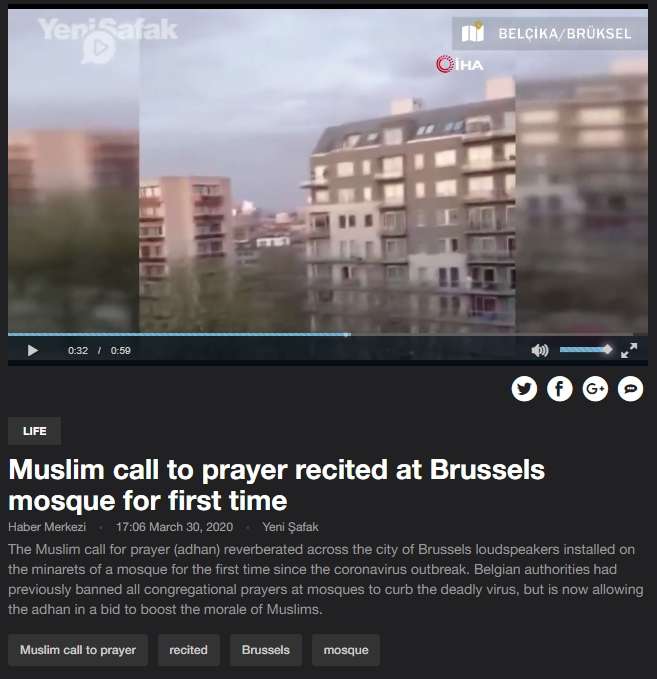
Mark my words, a precedent has been set!
Same in Duisburg, in Germany's Ruhrgebiet, where the adhan resounded fromthe minaret of the DITIB-run central mosque:
Duisburg is no isolated case. There are reportedly hundreds of mosques in Germany which did the same.
Same in Amsterdam, this tweet is from muslim police officer 'Mohsin' and shows the El Umma mosque:
Onze buren, moskee El Umma, hebben vandaag voor het eerst de oproep tot gebed versterkt gedaan. Reden hiervoor was om de gemeenschap een hart onder de riem te steken in deze roerige tijd waarin iedereen getroffen is. Wij hopen, net als iedereen, dat we snel uit deze periode komen pic.twitter.com/KPtUUqqFZc
— Wijkagent Mohsin (@WijkagentMohsin) April 3, 2020
This 5th column man in police uniform is actually far more dangerous than the cruelest ISIS member who left The Netherlands to wreak havoc in Syria.
And for those not swayed by these lovely demonstrations of muslim compassion there were more convincing arguments of solidarity in times of corona:
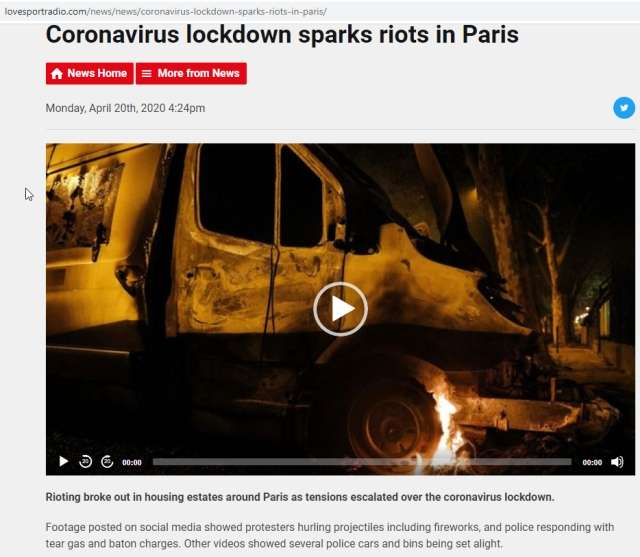
"Rioting started in Villeneuve-la-Garenne on Sunday evening, according to broadcaster France Bleu, and continued on Monday night time with fireworks released at law enforcement.
Numerous other Paris suburbs also noticed violence and rioting such as the infamous no-go location of Seine-Saint-Denis which noticed rubbish cans lit on fire in both Aulnay-sous-Bois and Saint-Denis.
Various parts also reported attacks on police instantly in Asnières, Nanterre, Meudon, Clamart, and Gennevilliers.
The section of Yvelines, which has viewed almost everyday assaults on the law enforcement for the earlier two weeks, reported officers attacked in the town of Noé by a team of about 20 men and women who released projectiles and fireworks at them.
Significantly less than an hour later on in the commune of La Verrière, one more police patrol was attacked by a team of close to five persons. Rocks were being then thrown at officers in Mantes-la-Jolie and a bus was attacked with fireworks in Sartrouville a brief time later on..."
Villeneuve-la_Garenne: police counterattacking muslim youths. YES, they are definitely 'MUSLIM' youths! Ain't no Biofrench youths, no Vietnamese youths, they ain't even Chinese youths:
Un jeune du quartier :
— Actu2dinguerie (@Actu2dinguerie) April 20, 2020
« C’est pour Villeuneuve tout ça »
Réponse du policier :
«Eh Nike ta mère va la récupérer elle suce des bites derrière la mosquée » 💥#VilleuneuveLaGarenne #aulnaysousbois #nanterre #Quartier #Paris #Vidéo #Emeutes #Police https://t.co/QWF0K7730b pic.twitter.com/ptdqreS6ME
En direct depuis le quartier du Luth à #Gennevilliers une voiture de la bac prise pour cible par des tirs de feux d’artifices.#VilleuneuveLaGarenne #VilleneuveLaGarenne pic.twitter.com/cqdAwSvYi1
— Taha Bouhafs (@T_Bouhafs) April 20, 2020
🔥🇫🇷 Fourth night of riots in the Parisian suburbs of Villeneuve La Garenne. There have also been incidents elsewhere in the banlieue de #Paris. #France #disturbed #Incidents #COVID19 #coronavirus pic.twitter.com/8xchFzMDxy
— Pepe Mujica - Palabras y sentires 🎗 (@PalabrasdePepe) April 22, 2020
J’en peeeeeeux pluuuuuuus il a pris de la hauteur wallah ça fait 30 min je rigole 😂😂😂😂 #VilleneuveLaGarenne pic.twitter.com/b6apjbTb3i
— MECMORT💀 (@moussdeuxfois) April 19, 2020
Aulnay-sous-bois, a well known Dar-al-Islam hotbed and muslim no-gone zone:
C’est chaud a aulnay sous bois 🔥#villeneuveLaGarenne pic.twitter.com/MFMe5tskAt
— M2ogli 🎤 (@Moogli3ks) April 21, 2020
Corona may be bad, but we will conquer it, that's for sure.
The ongoing - actually, 'thanks' to corona, *accelerating*, islamization, now, that is another matter.
MFBB.
Sunday, April 19, 2020
SUNDAY ART SNACK: GEORGE HENRY, EMILE CLAUS, FREDERIC EDWIN CHURCH.
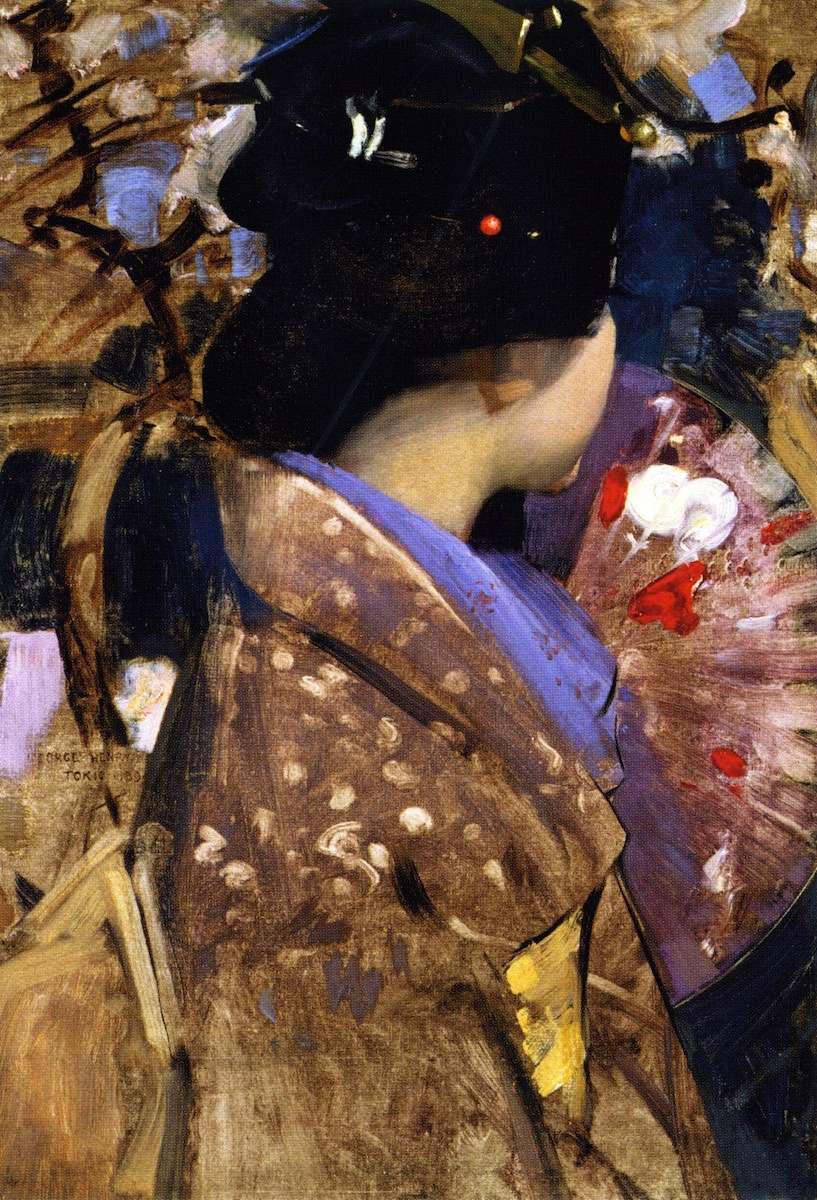
George Henry RA (1858–1943) was a Scottish painter and a prominent member of the Glasgow School. He studied at the Glasgow School of Art and later in Robert MacGregor's studio.
Emile Claus with Afternoon along the river.

Émile Claus (27 september 1849 te Sint-Eloois-Vijve – 14 juni 1924 te Astene) was a Belgian painter, the most talented Luminist. Luminism was a late-impressionist style centered around light effects. The painting above is no luminist work of Claus, but the one below is: Anna De Weert. De Weert, a pupil of Claus, later became a prominent luminist in her own right.
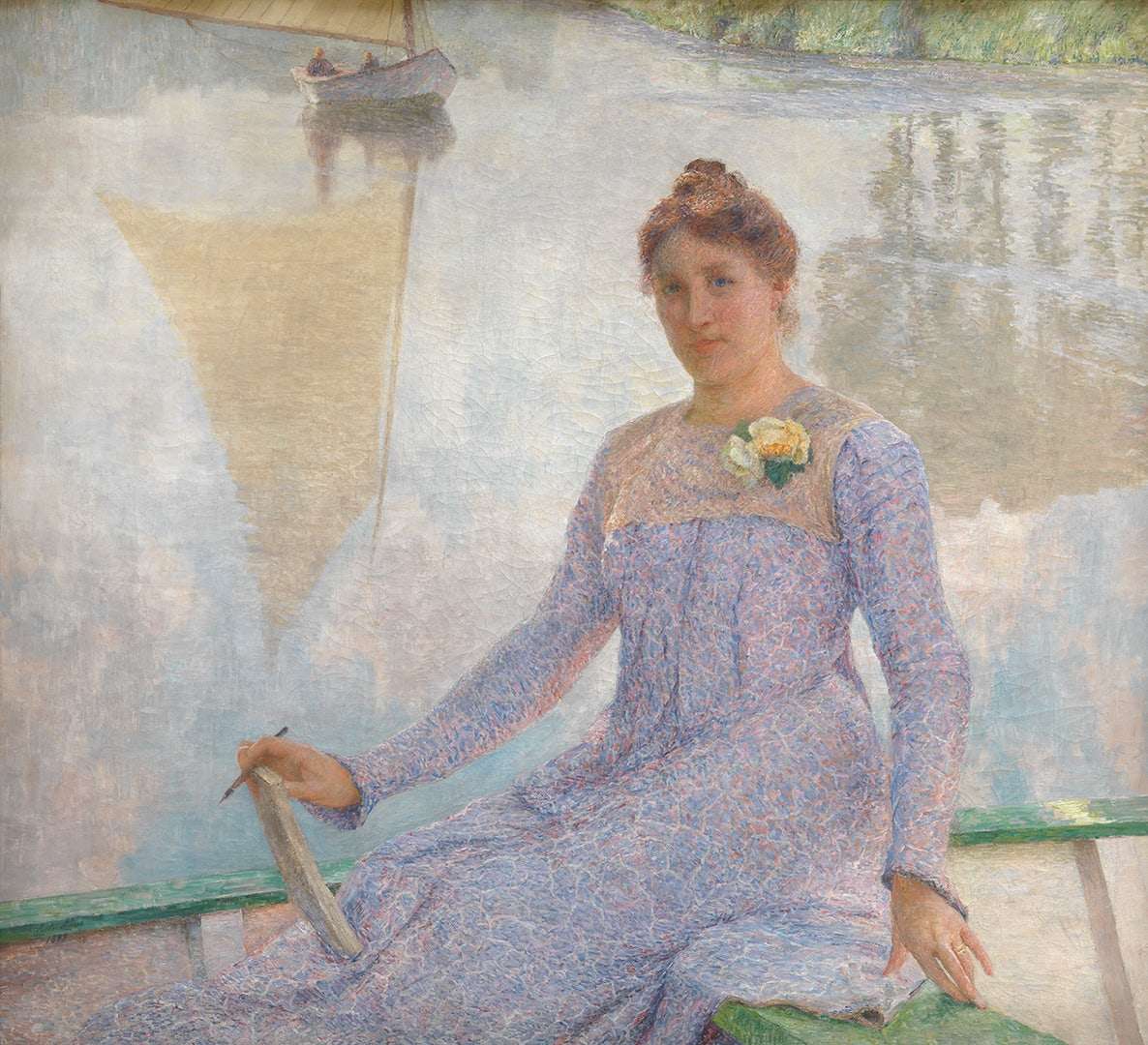
Frederic Edwin Church's Koenigsee, Bavaria.
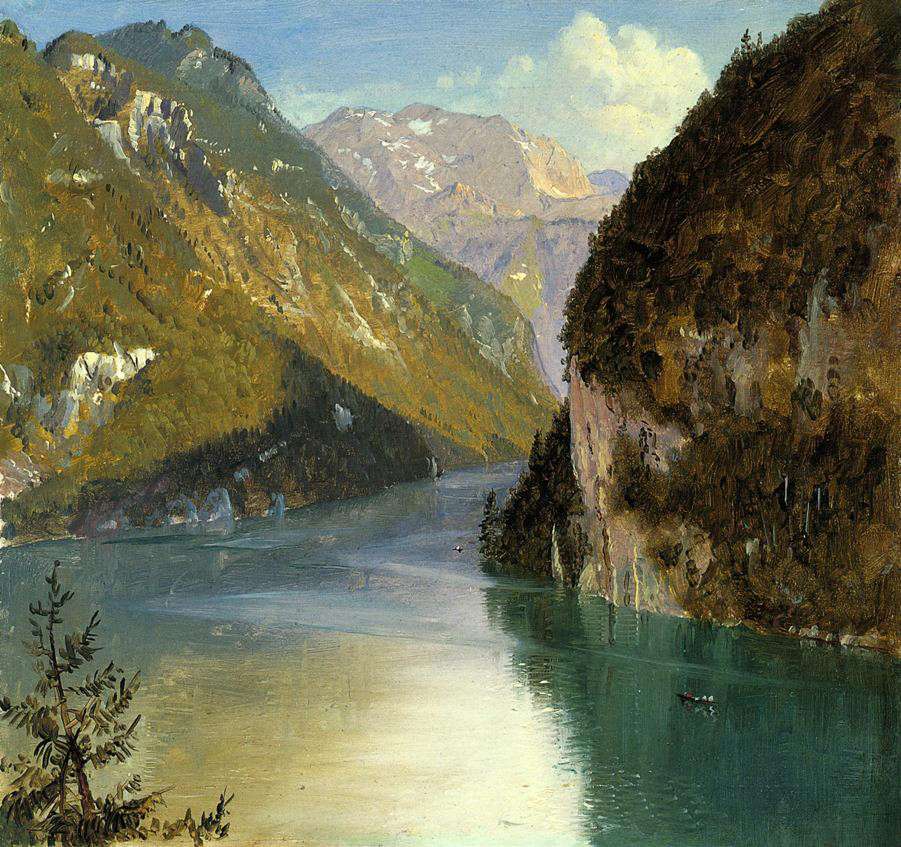
Frederic Edwin Church (May 4, 1826 – April 7, 1900) was an American landscape painter and a central figure in the Hudson River School.
MFBB.